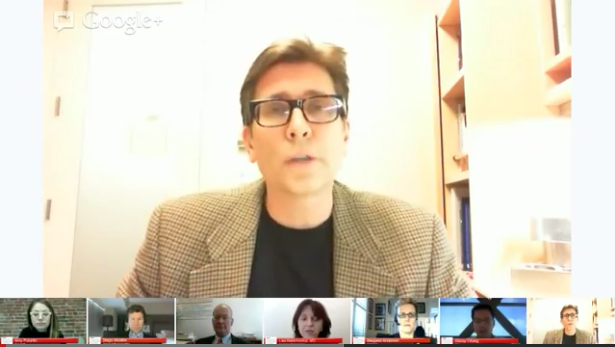 Innovation almost by rule drives cost down in other industries, but not so much in healthcare. "Healthcare is unique in that every added feature increases the cost," Dr. Diego Miralles, head of Janssen Healthcare Innovation, part of the Janssen Pharmaceutical Companies of Johnson & Johnson, said last week during a live TEDMED webcast.
Innovation almost by rule drives cost down in other industries, but not so much in healthcare. "Healthcare is unique in that every added feature increases the cost," Dr. Diego Miralles, head of Janssen Healthcare Innovation, part of the Janssen Pharmaceutical Companies of Johnson & Johnson, said last week during a live TEDMED webcast.
One exception to that rule, however, is generic drugs, which have been shown to reduce spending, Miralles said.
Digital health may be another, but only if it truly engages consumers and/or offers real value to healthcare practitioners, other panelists suggested. "I would posit that innovation can't happen unless you're bringing the end user to the table to be part of it," suggested Margaret Anderson, executive director of FasterCures, an organization that seeks to accelerate the pace of medical research.
Dr. Lisa Bielamowicz, senior VP for physician strategy at the Advisory Board Co., said primary care physicians and other clinicians know, for example, how to treat diabetic patients, but often struggle in engaging patients to take a more active role in their own care. That is where digital health can come in.
"Some of the most compelling innovations that we are seeing are devices, technologies, solutions that connect the patient to the provider, connect the patient to a community, so that they are engaged in the same treatment pathways that we know are the right ways to treat a chronic disease patient and just haven't had a way to make them 'sticky,'" said Bielamowicz. "If you can have a low-cost innovation that glues a patient into what they need to be doing, it will save costs for the entire system."
And patients are beginning to demand participation in their own care, Bielamowicz added, creating another opening for technological innovation. "They need to be an active part of the care team, but it puts a huge burden on providers to figure out the right way, the right information level, the right type of engagement for each kind of patient."
Stacey Chang, associate partner and director of the Health and Wellness Practice at design and innovation consulting firm IDEO, suggested that healthcare already has reached the tipping point in terms of consumer engagement. "The discussion isn't about if, it's about when and how fast on the patient front," he said.
The rapid adoption of electronic medical records, catalyzed by the federal "meaningful use" incentive program, has created an "explosion" of patient data. And growth in patient monitoring devices, though not as quickly as EMRs, has added to the glut, according to Bielamowicz.
"How do we synthesize all of this information together and who's going to own it, who is going to do that analysis and who is going to feed it back into the hands of a provider so that it is in a usable, actionable format?" she wondered. Bielamowicz said primary care physicians and others on the "front lines" of patient care will not have the time to sort through all this data, so there is a great market opportunity for entrepreneurs.
On the provider side, design and usability are limiting factors more than technology itself, Chang suggested. "If an MD is not engaging in technology, it's probably because that it was designed poorly. We've got a whole generation of people who grew up on technology asking for it in the clinical space now," he said.
One question that came through on Twitter during the hour-long discussion was whether crowdsourcing is "democratizing" innovation in healthcare. "Being able to tap into the power of the collective gets us a lot of opportunities," noted Bielamowicz. Chang largely agreed.
However, the panelists – also including Amy Puliafito, marketing content leader at digital health accelerator Rock Health, and Dr. Donald Rucker, VP and chief medical officer of Siemens Healthcare USA, plus moderator John Nosta of Ogilvy CommonHealth Worldwide – diverged a bit in their opinions of gamification in healthcare.
Bielamowicz said that best clinicians have been using a form of gamification for years without even knowing it. Setting discrete, manageable goals and "jumping from level to level to level" is a much more effective way of managing chronic diseases than trying to tackle everything once, she explained.
"Your average individual isn't as engaged with healthcare as they are with their cell phone or with their social network through Facebook," added Chang. "There is an innate motivation on the consumer side which maybe doesn't necessarily exist on the healthcare [side], which maybe you have to overcome first before you can start applying mechanisms like gamification."
Rucker was not so much sold on gamification for some classes of patients, however. "I think the challenge is that a lot of the activity [in digital health] is with the very, very sick patients. They are often the least able just for reasons of illness to get into some of these newer technologies, so I think the innovation there has to be directed in the context of that illness," the Siemens executive said.
He also reminded listeners of yet another way healthcare is different from other industries: Providers in the U.S. can't get paid for bringing in technologies without device approval from the FDA and reimbursement codes from CMS, so the cost of entry is high, often too high for entrepreneurs. Academia can fill some of the gap, Rucker said, but healthcare relies more on academia for innovation than pretty much any other industry in the country.

















